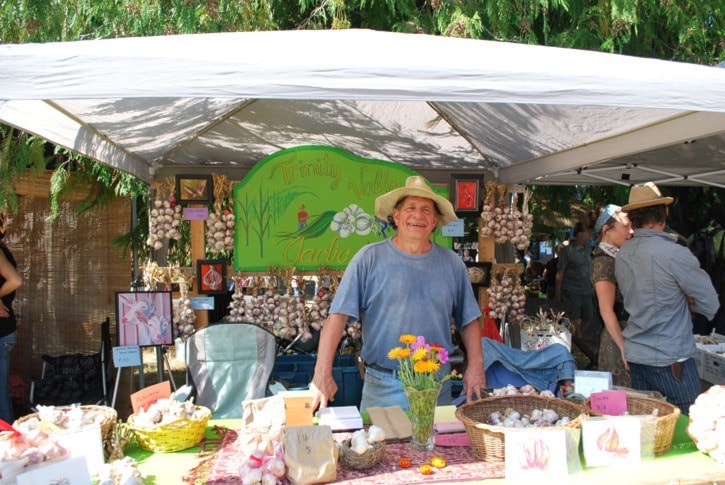There is nothing like biting into a crisp, sweet, radiantly orange carrot in late summer. Whether you grow them yourself or you buy them at the farmers’ market, there is no doubt that carrots are one of the great joys that grow in Kootenay dirt.
There is something particularly special about knowing there is food growing in our own back yard. Vegetables from our own gardens and farms taste sweeter, a little dirt and all.
The fall fair is a reminder of the bounty available to us here in the Kootenays, the richness of the soil and the food that makes us who we are.
For many reasons, food and farming have come to the fore in our culture once again, partly because, once again, we are facing tough economic times.
Whatever the reasons, developing and supporting local agriculture is being discussed at all levels of society, from individual interest in gardening to the creation of national food security policy.
This is as true here in the RDCK as it is elsewhere. In June of 2010, the RDCK put together an agricultural plan (Agplan) outlining what needed to happen for agriculture to flourish in the regional district.
On the board were directors, food merchants, and farmers; all stakeholders in the development of a coherent agricultural policy for the district.
The two area directors who sat on the board are responsible for very different regions, agriculturally speaking. Larry Binks is the director for Area C which contains the well-established farmlands around Creston, whereas Paul Peterson’s Area K is facing the challenge of reclaiming previously farmed land or developing new arable areas.
When I talked with Peterson, he was clear that nothing much would happen until the upcoming RDCK elections were over, but he was still very happy to talk about the Agplan.
Farming is a hot topic, not just for the directors. When the CBT held a series of community development forums last year, the number of attendees for the agriculture night was twice the size of any other. Clearly, food matters.
Internationally, the Humanitarian Resource Institute has called on the UN to ban speculative trading, stating “the simple answer appears to be that many of key players leading the humanitarian relief call, [are] burying dead children that died because food prices [were inflated due to] speculative trading of infrastructure critical commodities, [and] are profiting from the trade [of] interrelated oil, food, [and] agriculture.”
“Food security,” knowing where your food comes from and how it makes its way on to your plate, has become an issue for serious consideration at national, regional and municipal levels.
The costs of food in the supermarket have risen for many reasons, but food cost is far more complex than simply what you pay to Overwaitea.
Costs associated with food extend beyond the mere financial into health and labour concerns.
Farmers and farm labourers are abysmally under paid, for instance, both here and further afield. Any money gained quickly disappears into insurance, equipment and maintenance.
What is grown is very important as well. Large monoculture crops run the enormous risk of ruinous failure if a crop-specific pest is introduced, as is well-known here in B.C. with the pine-beetle epidemic.
Land use is another issue, and many places have seen farmland taken over by corporations interested in cash-cropping that displace local farmers who run diversified farms.
“There’s five companies who control the majority of food,” Paul Peterson said, “and they need to be out of the picture.” His passion for keeping food production local and diverse speaks of his commitment to developing policy and real strategies to get farming going here again.
He sees new economic growth and financial success coming with the development of local agriculture but is cautiously realistic about its progress.
“It has to be one step at a time or it will fail,” he told me.
Another land issue is that prime agricultural land is often sold to people who do not farm it, something that Peterson would like to see changed.
Either that, or arable land in the ALR is Crown land and there is no system yet that would allow farmers to lease land from the government.
When I talked to Larry Binks, he seemed content with the state of agriculture in his region, citing the establishment of a new Jersey dairy, a cheese factory and Skimmerhorn vineyard as proof of his dedication to agriculture. He also declared his personal commitment to eating locally several times. The one issue that he had was with insurance companies who he felt overcharged farmers and made it difficult for them to function.
When I asked if it was necessary to pursue larger markets, such as large chain stores, he replied, “I think we have their attention.”
Binks’ assured stance may come from the fact that the area surrounding Creston has a long tradition of being an agricultural centre. Paul Peterson’s area K once had a thriving agriculture which went into decline with the loss of the railway to connect it to outside markets. Now, only remnants of the orchards can be seen throughout the area, and fields that have lain unworked for years.
But Peterson is not alone in the desire to rework the land into thriving farms again, and the RDCK’s Agplan lends a hand in planting the seeds of future abundance.
